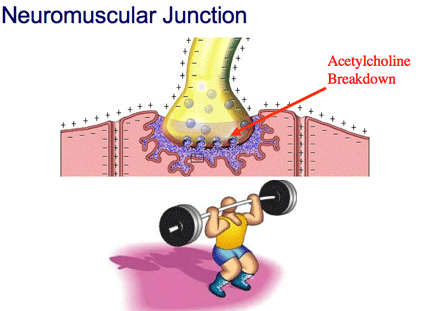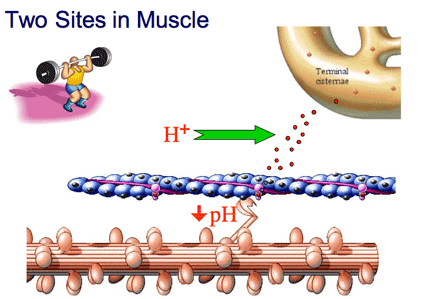| May 4-May 8: Wingate Muscular Power Test OBJECTIVES: Be able to describe the Wingate Muscular Power Test Be able to explain what energy systems and fiber types are emphasized with this test Be able to describe characteristics of aerobic athletes Be able to describe characteristics of anaerobic athletes Be able to discuss the Wingate Muscular Power Test results and analyze if a person has aerobic and/or anaerobic characteristics Be able to explain neuomuscular fatigue Be able to explain two sites of fatigue in muscle The Wingate Muscular Power test is an anaerobic exercise test, most often performed on a stationary bicycle, that measures peak anaerobic power and anaerobic capacity. Anaerobic power and anaerobic capacity values have been reported as important factors in sports with short burst, all-out efforts. Short sprinting events rely heavily upon the anaerobic energy pathways during execution. In this lab we will go over all of the preparatory steps to do the Wingate, test the Wingate on two participants, analyze the results and theoretically apply this test to what we have learned in Exercise Physiology. Class, you will need to download the Wingate Worksheet below to complete this Lab. Click Here to Download the Wingate Muscular Power Worksheet |
||||||||
|
|
||||||||
| Peripheral Muscular Fatigue | ||||||||
| Introduction to Fatigue: There are actually TWO TYPES of fatigue. CENTRAL fatigue is the signal message from the brain to the neuromuscular junction. PERIPHERAL FATIGUE is the signal message right at the neuromuscuscular junction and the signals within the muscle. In class, we focus on peripheral fatigue. Peripheral Fatigue at the Neuromuscular Junction: Neuromuscular Junction: With the neuromuscular junction peripheral fatigue there is a breakdown of acetylcholine (ACh) in getting to the motor end plate. The action potential does not reach the motor end plate. Therefore, the muscle contraction signal will not be able to continue into the muscle. Peripheral Fatigue occurs at TWO sites within muscle: At one site, the H+ ions (from the hydrolysis of ATP) interfere with calcium ions from binding to troponin. The H+ (protons) actually bind with troponin. However, when protons bind with troponin, there is no SHIFT of tropomyosin. Thus, this proton interference PREVENTS the configuration shift of tropomyosin to reveal the active bindings sites (which are needed for the S1 units to bind and begin the power stroke in muscle). In the second site within muscle, the increase in acidosis (from the H+ ion accumulation) will denature (i.e., breakdown or unfold) the enzyme ATPase. This inhibits the splitting of ATP to ADP and Pi and energy. The H+ accumulation is coming from the hydrolysis of ATP during the exercise bout. The H+ comes from the water molecule (H2O) during the hydrolysis of ATP. With decreased splitting of ATP there is not enough energy to continue the exercise bout. |
||||||||
 |
||||||||
 |
||||||||
|
|
||||||||
| This Concludes our Wingate Muscular Power Test Lab |
||||||||
| Click Here for Lab Worksheet to Complete |
||||||||
|